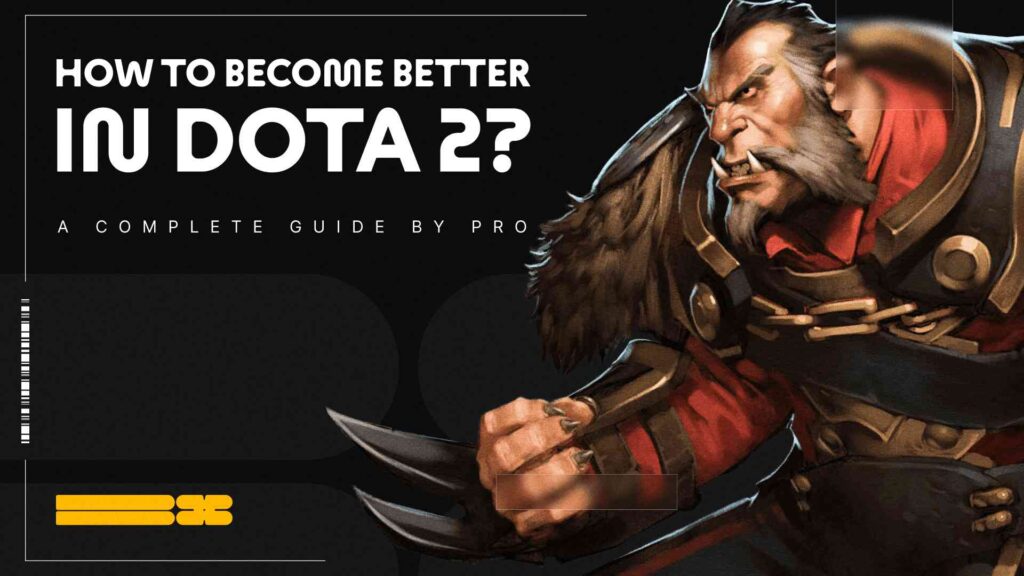Blix team, along with Dota 2 pro players, has put together a step-by-step guide for our readers on how to learn to play Dota 2. In this article, you will find information on finding the fitting game role for you and the correct item builds. You will also learn how to understand game entities, such as objectives, and how to move around the map and control the mini-map properly. The guide will also help you understand game phases, learn how to farm effectively, communicate with your team, and select the right target to focus in team fights.
Contents
- 1 What Are The In-game Roles in Dota 2?
- 2 Carry
- 3 Midlaner
- 4 Offlaner
- 5 Soft Support
- 6 Hard Support
- 7 What Are Items in Dota 2 and Which Ones to Buy?
- 8 Item Builds
- 9 How Can Destroying Dota 2 Enemy Objectives Help Your Team?
- 10 Towers
- 11 Tormentor
- 12 Roshan
- 13 Lotus Pools
- 14 How to Practice Map Awareness in Dota 2?
- 15 Mini-map Control
- 16 What Are Key Movement Aspects in Dota 2?
- 17 How to Gank in Dota 2?
- 18 How to Bait Enemy in Dota 2?
- 19 Save Rotations
- 20 Teleports Tips
- 21 How to Use Smoke of Deceit Correctly?
- 22 Rune Control and Timings in Dota 2
- 23 Zone Control
- 24 How Do I Navigate in Dota 2 Game Phases?
- 25 Laning Phase
- 26 Mid-game
- 27 Late-game
- 28 Why Farming Is Important and How to Speed It Up?
- 29 How to Farm Creeps Properly? (Each Role)
- 30 How to Pull and Stack Neutral Creeps?
- 31 How to Use Resources?
- 32 What is HP and MP Tracking?
- 33 How to Use Abilities and Items Cooldowns in Dota 2?
- 34 How to Act in Dota 2 Teamfights?
- 35 What Target to Focus in a Team Fight?
- 36 Where to Stand in Fights?
- 37 When or Why to Start a Fight?
- 38 How Do You Act in a Team?
- 39 Why is Communication Important in Dota 2?
- 40 What Should I Call a Significant Role?
- 41 How to Step Up and Become Better?
- 42 Useful Sites for Dota 2 Players
What Are The In-game Roles in Dota 2?
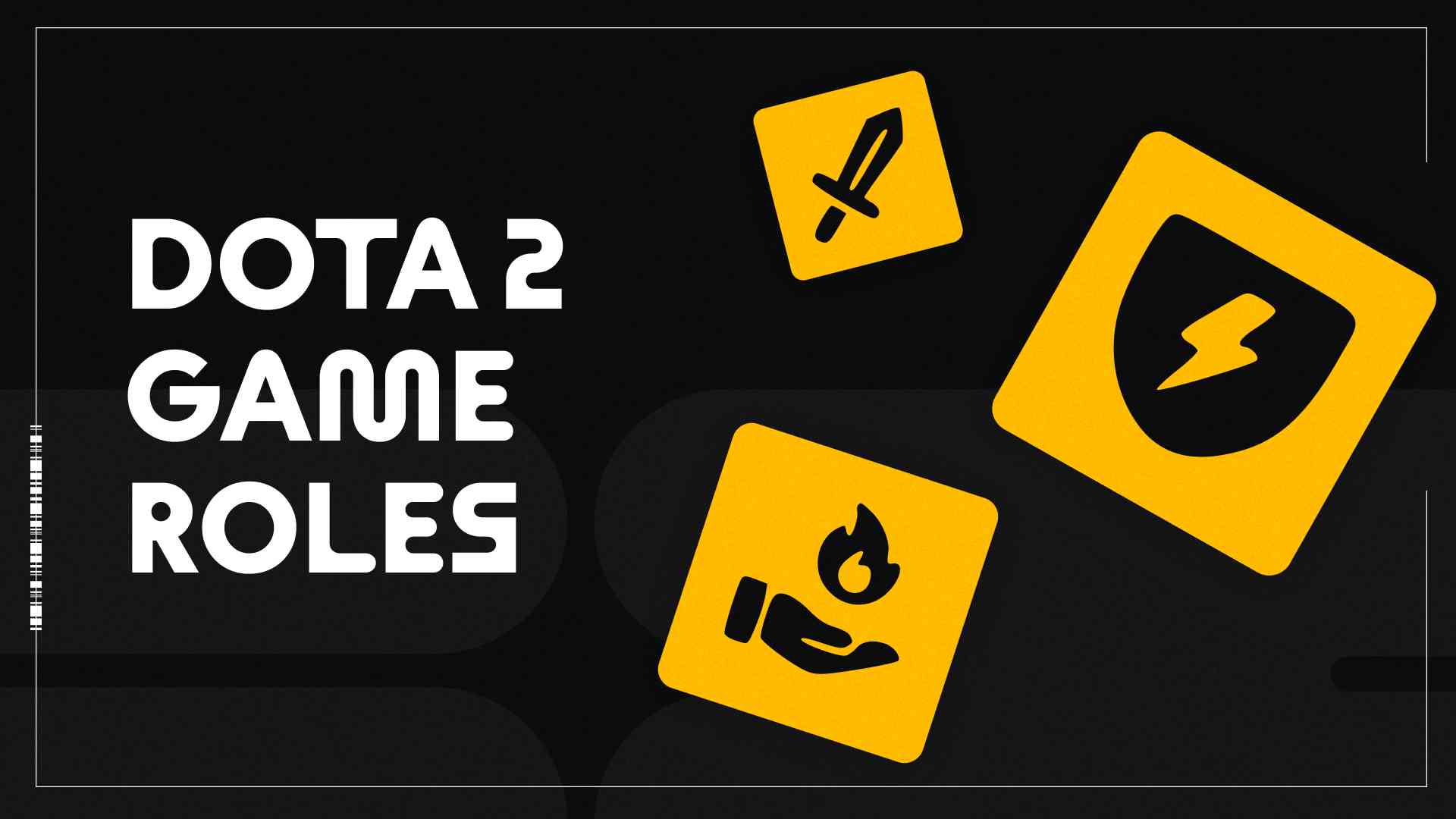
Choosing in-game Dota 2 role
There are five primary roles in Dota 2: Carry, Midlaner, Offlaner, Soft Support, and Hard Support. Each role has distinct tasks and responsibilities essential for the team’s victory.
The Core roles are Carry, Midlaner, and Offlaner. These three positions are crucial as they handle most of the farm on the map.
Soft Support and Hard Support are both supporting roles. Their main task is to make life easier for their allies by helping their team gain as much experience and gold as possible, control the map, and eliminate enemy heroes.
Carry
Carry (Position 1) role is the team’s backbone. Typically, this role is responsible for farming the most gold and experience on the map. Carry heroes are usually less potent in the early game. Still, they have excellent farming capabilities and can reach their full potential in the middle or late stages of the game. These heroes often depend on items that must be obtained in time for crucial moments in the game. Check out our How To Play Carry Role In Dota 2? A Complete Guide By Pro.
Midlaner
Midlaner (Position 2) is the most skill-dependent role. Midlane heroes should be effective at all stages of the game. The main task of the Midlaner is to create impactful plays across the map. The player must analyze the game thoroughly and make decisions that will be most effective for the team. In most cases, the Midlaner must move around the map and actively participate in fights.
Offlaner
Offlaner (Position 3) is the final core role in the game. Offlaners are usually heroes who significantly impact their team during fights. Players often prioritize acquiring items that make them more durable, help with initiation, and provide auras to benefit the team. Heroes in the third position are usually initiators with abilities that can disable enemies.
Soft Support
Soft Support (Position 4) is a support role with more freedom of action on the map than Hard Support. At the start of the game, Soft Support usually accompanies the Offlaner on a hard lane and aims to apply as much pressure on enemy heroes as possible. Players on this position can actively move around the map, assist the allied Midlaner in controlling runes, and also execute unexpected gangs on other lanes.
Hard Support
Hard Support (Position 5) is a full support role with many responsibilities. During the laning phase, your main priority is to help your Carry farm effectively while also creating pressure on the enemy heroes. Additionally, you are responsible for placing and destroying Wards on the map. It’s crucial for fifth-position players always to have various consumables, such as Dust of Appearance and Smoke of Deceit.
What Are Items in Dota 2 and Which Ones to Buy?
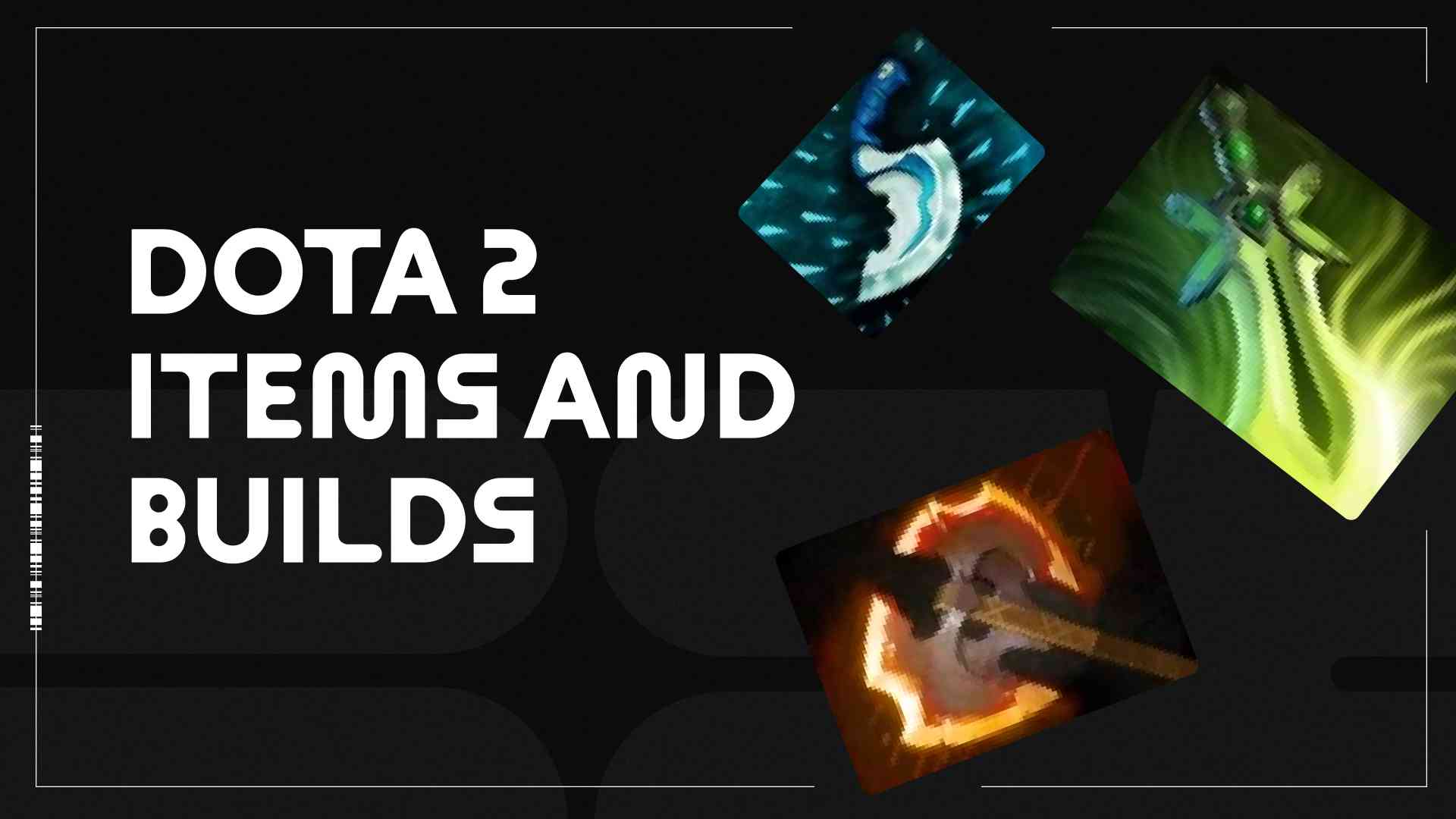
Dota 2 Items and Builds Explanation
The game features consumables, standard items, neutral items, Roshan-drop items, and lotuses, which provide heroes with various bonus attributes, abilities, and passive skills.
Consumables have limited charges and provide HP and MP upon use. Examples are Tango, Healing Salve, Clarity, and Mango. There are also items for vision, like Observer / Sentry Wards, Smoke of Deceit, and Dust of Appearance.
The standard items can be attributed to everything bought in the shop or a secret shop and anything that strengthens the hero or gives him new opportunities.
Neutral items drop when neutral creeps die. They are divided into five tiers, each with a specific drop time.
- Tier 1 items drop after the 7th minute
- Tier 2 after the 17th minute
- Tier 3 after the 27th minute
- Tier 4 after the 36th minute
- Tier 5 after the 60th minute
Players are limited to one item per tier and can only use one neutral item at a time; neutral items are free for players to acquire.
Roshan-drop items are the rewards for killing Roshan, including Aegis of the Immortal, Cheese, Roshan’s Banner, and Refresher Shard. Lotuses are consumable items that can be obtained from the Lotus Pool.
Item Builds
Item Builds are combinations of items a hero purchases to maximize their effectiveness at all game stages. There are numerous Item Builds for each hero, and they can vary depending on the game situation and the choices made by enemy and allied heroes. Generally, item choices can be categorized as attack and defense items, team items for auras, and supporting items for protecting yourself or allies.
How Can Destroying Dota 2 Enemy Objectives Help Your Team?
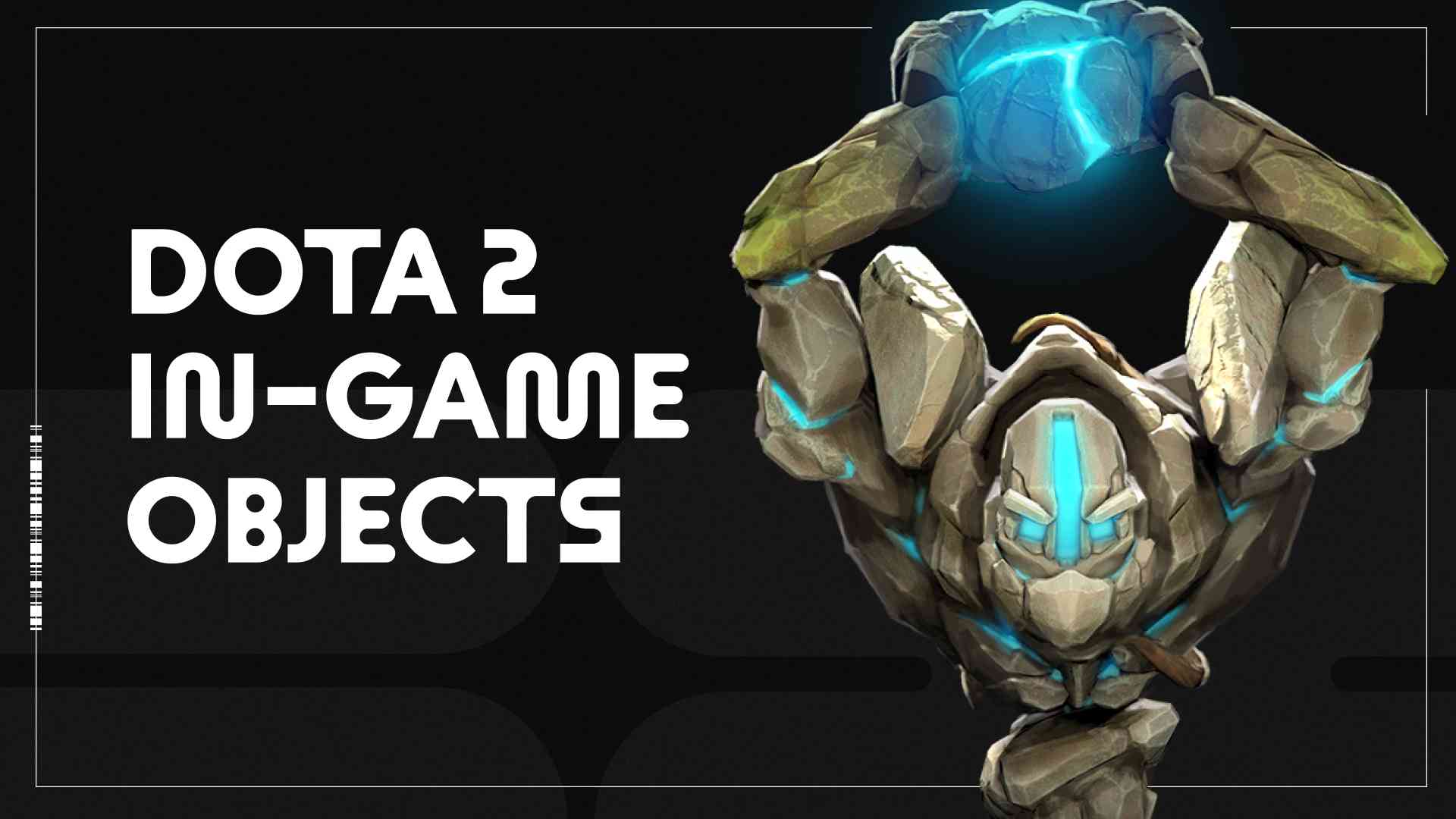
Dota 2 Objectives Info
Objectives are key goals, or “checkpoints,” that will help your team get closer to victory. Killing enemy Objectives gives you various advantages, such as map control or bonus gold.
Towers
Destroying enemy towers is a common tactic that can help you gain more control of the map and earn extra gold. Each enemy tower has a specific strategic value. For instance, destroying a Tower on the enemy’s easy lane provides the opportunity to capture the enemy jungle, while destroying a Tower on the middle lane allows for more active and secure movement around the map.
Tormentor
Unlike other neutrals, it is a neutral creep that can neither move nor attack. However, despite this, they are not easy to kill due to their barriers and extreme damage deflection.
A random team member will receive an Aghanim’s Shard for killing a tormentor. The entire team will earn extra gold if all heroes already have a Shard.
The Tormentor appears at 20:00. After killing it, it revives 10 minutes later.
Roshan
Roshan is a crucial objective on the map. Killing him provides a significant advantage by granting the Aegis of the Immortal and other bonus items. Roshan has two lairs located in opposite parts of the map, and he moves between them using a portal during the change of day and night. Upon the first Roshan kill, an Aegis of the Immortal drops. Cheese or Roshan’s Banner drops after the second kill, and Aghanim’s Scepter or Refresher Shard drops after the third kill. The dropped items depend on which side of the map Roshan was killed on.
Lotus Pools
Lotus Pools are objects located on the edges of the map. The pool passively creates a Healing Lotus every 3 minutes. No more than six lotuses can be in one pool at a time. Lotus Pools are neutral objects, and you can’t teleport on them.
How to Practice Map Awareness in Dota 2?
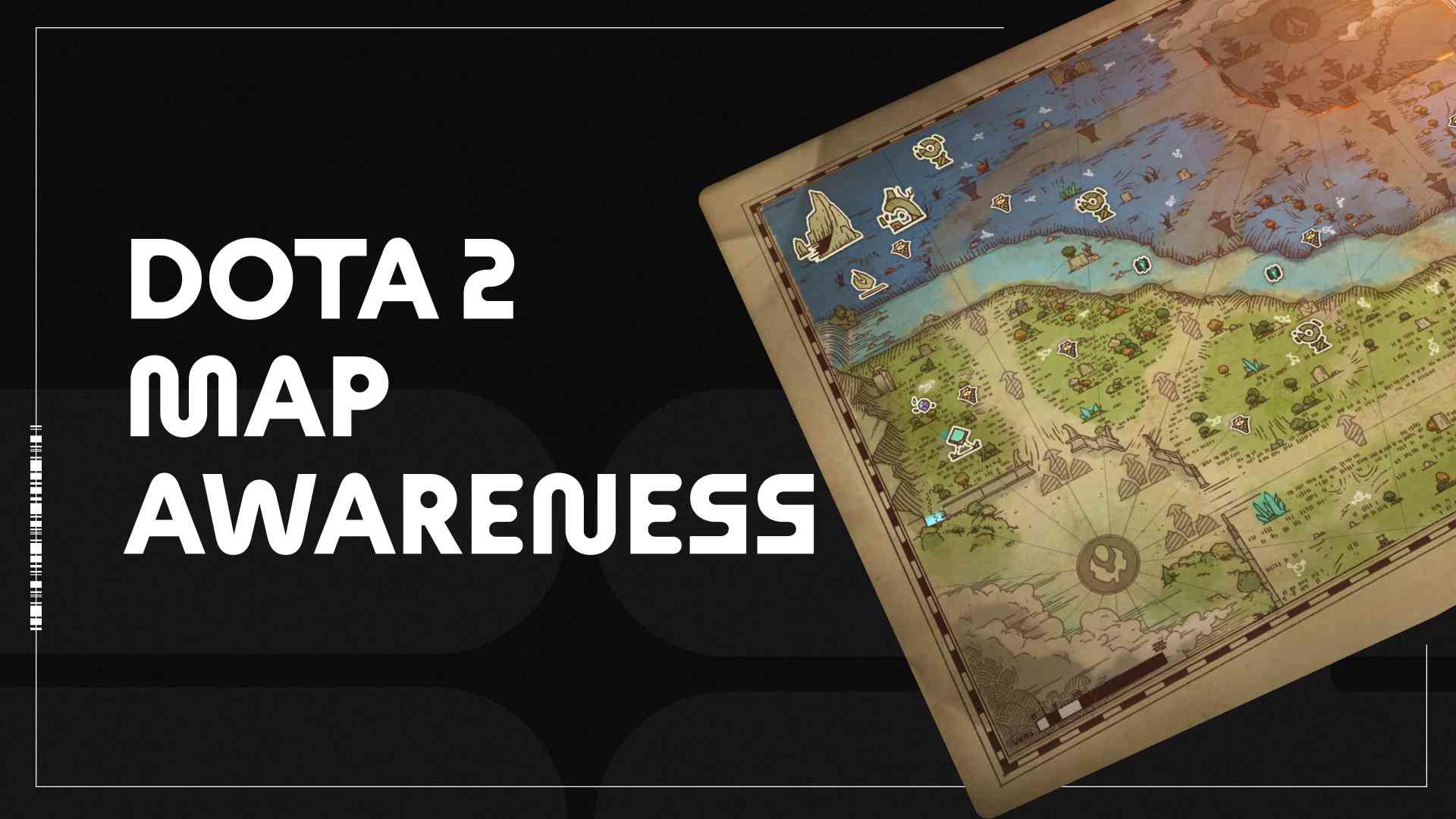
Dota 2 Map Awareness
Map control is crucial in the game. The map is quite large, and only a few heroes have enough mobility to move quickly from one part to another. It’s essential to use teleporters correctly and know when and where to move. Controlling a significant part of the map allows you to play more freely and earn more experience and gold than your opponent.
Mini-map Control
The mini-map is a vital tool that allows you to monitor the positions of both enemy and allied heroes without interrupting the gameplay. Keeping an eye on the mini-map is a habit that will help you avoid many deaths.
Personal Tips:
- To make it easier to track their movements, increase the size of the hero’s icons on the mini-map in Settings.
- In the Mini-map Settings, under “Icons“, select “Player Arrows“. This action will make it easier for you to navigate between heroes and distinguish them by the color of the icons. Also, the arrow will show you in which direction the hero is looking.
What Are Key Movement Aspects in Dota 2?
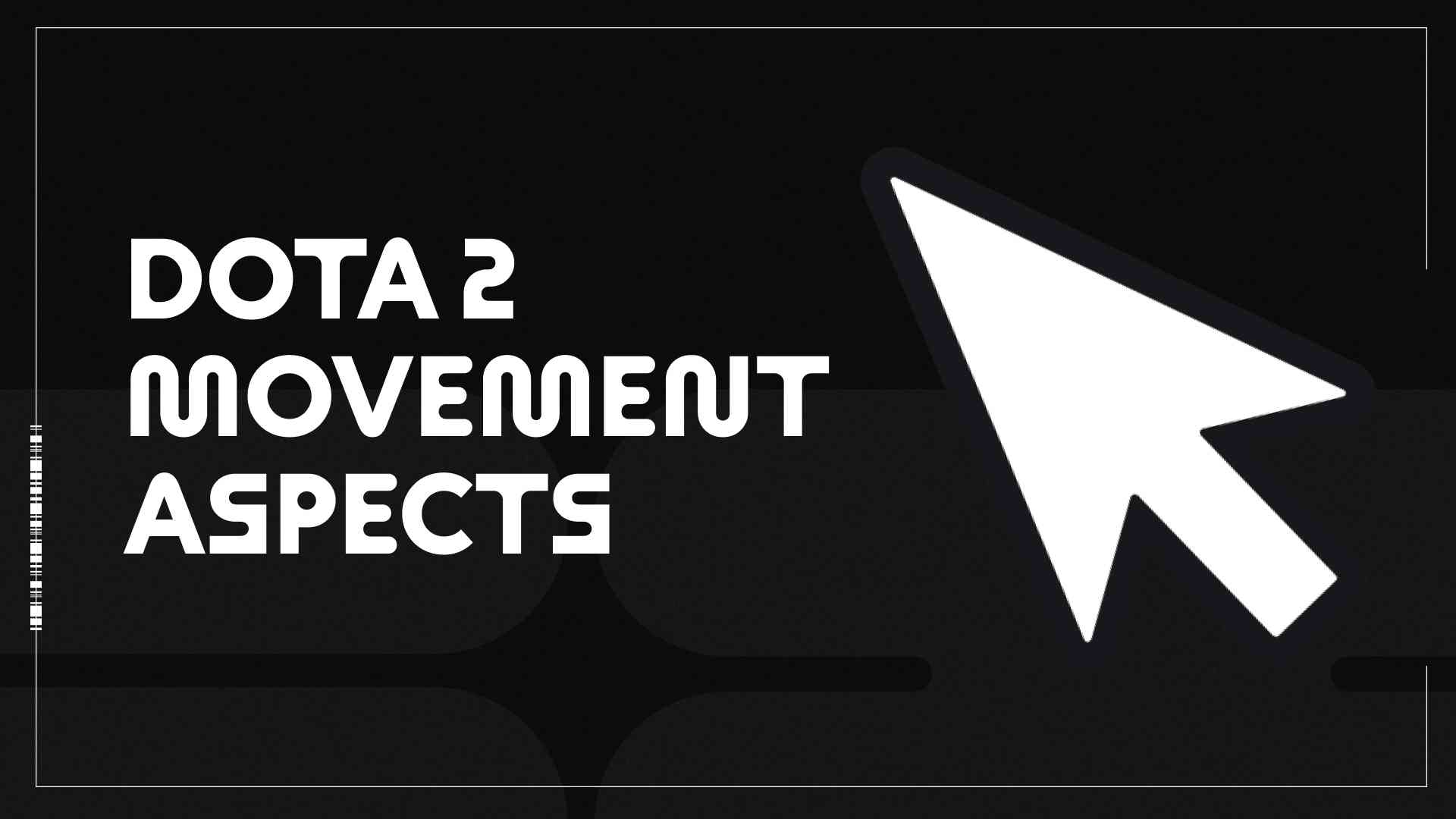
How to Properly Move Around The Map in Dota 2
How to Gank in Dota 2?
A gang is a way to move around the map to kill one or more enemy heroes.
Always try to perform gangs as suddenly and unexpectedly as possible for your opponents.
Both one and several heroes can take part in a gang.
Successful gangs allow you to take the initiative on the map, take key enemy objects, kill Roshan, or set up Wards.
How to Bait Enemy in Dota 2?
Bait is a way of luring one or more enemies to a particular place with the help of an allied hero. As a rule, bait is used either by a support who can sacrifice himself to kill an enemy core hero or by someone sure that he will not be killed quickly and that the team can get to the rescue in time.
Save Rotations
Save Rotations are movements on the map to help or save allies. They are usually performed by Support. High-level Support tries to anticipate the enemy’s movements in advance. At the moment of an enemy Gang they are already behind the back of the hero who needs help.
Teleports Tips
Teleports are the most common and fastest way to move around the map. Scrolls of Teleportation are used both for ganking and for rescuing allies.
Tips by Pro:
- If the enemy team has few disables, always try to have at least one Teleportation Scroll with you. This simple action will make you practically invulnerable as you can easily escape.
How to Use Smoke of Deceit Correctly?
Smoke of Deceit is a consumable item that is highly effective for ganking. It allows you to move stealthily, even under enemy Wards. However, the Smoke effect will fade if an enemy hero is nearby.
Tips by Pro:
- When playing as a support, make sure to purchase Smokes consistently. The store has a limited stock of them, and buying them will initiate their restocking, allowing you to have more Smokes than your opponents throughout the game.
- Smoke can protect you from certain spells, such as Zeus’ ult (Thundergod’s Wrath) and Tinker’s missiles (Heat-Seeking Missle), potentially saving your life.
Rune Control and Timings in Dota 2
Runes are essential objects that are divided into four types:
- Bounty Runes appear at 0:00 and every three minutes after that. These runes grant the entire team extra gold (36+9 per 5 mins per hero).
- Water Runes are for resource recovery (40 HP, 80 MP). They appear at 2:00 and 4:00.
- Runes of Wisdom provides extra experience (280 EXP + 280 per Interval). They spawn at 7:00 and every 7 minutes after that (14:00, 21:00, 28:00, etc.).
- Power Runes are the primary runes in the game. They start appearing at 6:00 and every 2 minutes after that.
Runes Control is critical at all stages of the game. Late-game damage or magic runes can determine the outcome of a vital battle. All runes can be stored in the Bottle, which restores +2/3 charges after pickup.
Zone Control
Zone Control involves capturing and controlling specific areas on the map to gain a game advantage. The map can be divided into several main locations: jungle, triangle, Roshan zone, portals, rune zones, and high-grounds. These places can be either allied or enemy-controlled. For example, you may need to capture and place an Observer Ward in an enemy triangle. This action will prevent the enemy’s carry hero from safely farming neutral creeps.
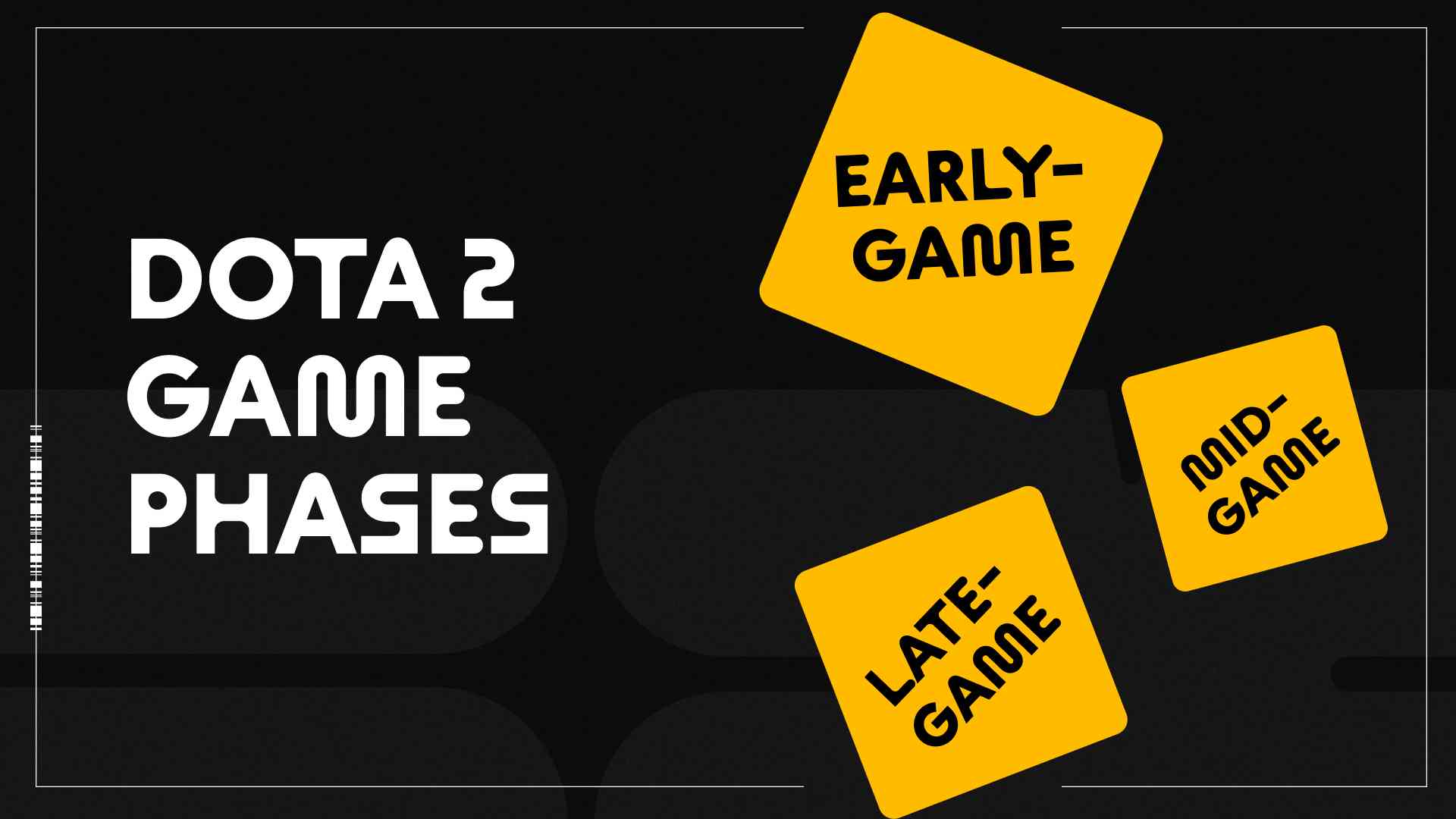
Dota 2 Game Phases Tips
The game is divided into three phases:
- Laning Stage (or Early Stage)
- Mid-game (or Middle Stage)
- Late-game (or Late Stage)
During each stage, all players have specific tasks to complete to gain an advantage and lead the team to victory.
Laning Phase
During the Laning Stage, also known as the Early Game Stage, which lasts from 0:00 to 12 minutes, all heroes are focused on their lanes. Carry focuses on farming as many creeps as possible and avoiding death. Offlaner strives to apply maximum pressure on the enemy. Midlaner works to gain an advantage and identify the perfect moment to gank. Supports are fully dedicated to assisting their carry allies.
Mid-game
During the Mid-game, which typically occurs between 12 to 26 minutes in the match, most heroes have acquired the necessary items to engage in fights actively. This stage is often dominated by Midlanders, who are at the peak of their power. Teams at this stage try to destroy as many enemy Towers as possible, kill Roshan, and take control of most of the map.
Late-game
In the late game, which occurs after 26+ minutes in the match, the Carry heroes reach their full potential. Securing Roshan and pushing the enemy’s high ground are the primary objectives during this final stage.
Why Farming Is Important and How to Speed It Up?
Farming in Dota 2 involves earning experience and gold, a crucial game aspect. The speed and effectiveness of farming often determine victory. To farm effectively, it’s essential to have a good understanding of the map and the ability to plan your actions several steps ahead.
How to Farm Creeps Properly? (Each Role)
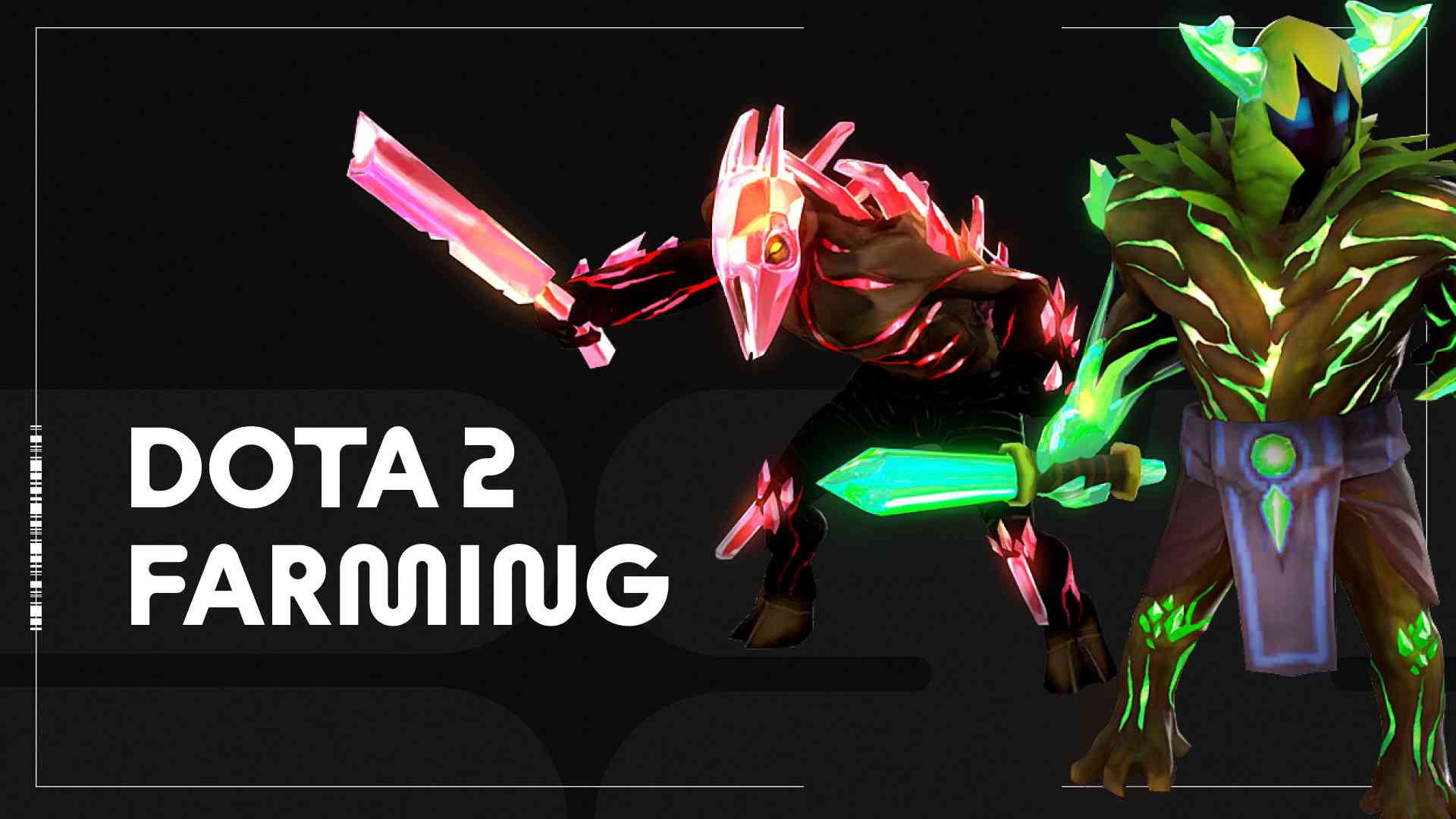
Farming Tips for Each Role in Dota 2
How to effectively farm with Core-Heroes? The Laning Stage is the first thing to focus on.
- Try always to control the creeps’ position and keep the pack as close to the allied Tower as possible without attacking them.
- Reaggro creeps on yourself. This action allows your hero to maintain the most advantageous position. Attack the enemy hero near creeps so the creeps will start focusing on you.
- Deny allied creeps as often as possible. This obvious action will prevent the creeps from moving too close to the enemy tower, plus your enemies will get less EXP.
Planning an efficient route is important when farming neutrals. Use your hero’s abilities to kill neutrals faster, and don’t hesitate to use mana. Utilizing abilities from a distance can significantly speed up your farming. Monitor the timer to stack creeps and consider their respawn time. Consider purchasing items like Battle Fury, Maelstrom, and Hand of Midas to speed up your farming process.
Farming is less critical when playing a Support role than in other roles. However, it would help if you farm a bit to stay engaged in the game.
- Use your abilities to quickly kill groups of creeps and earn gold without risking getting killed.
- Focus on stacking jungle camps. When a core hero from your team farms these stacks, you will still receive some resources.
- Be sure to collect Bounty Runes, which provide extra gold for the whole team.
How to Pull and Stack Neutral Creeps?
Stacking neutrals is a mechanic in Dota that can significantly increase your hero’s farming potential. Neutrals appear at 0:00 and every minute after that, but only if there are no creeps, heroes, or wards in the spawn area.
If you attack the neutral creeps at a specific time and pull them out of their camp, another group of creeps will spawn in their place. Generally, you need to attack the creeps at the 55th second of any minute to achieve this. In certain areas of the map, it’s possible to stack multiple groups of neutral creeps simultaneously.
How to Use Resources?
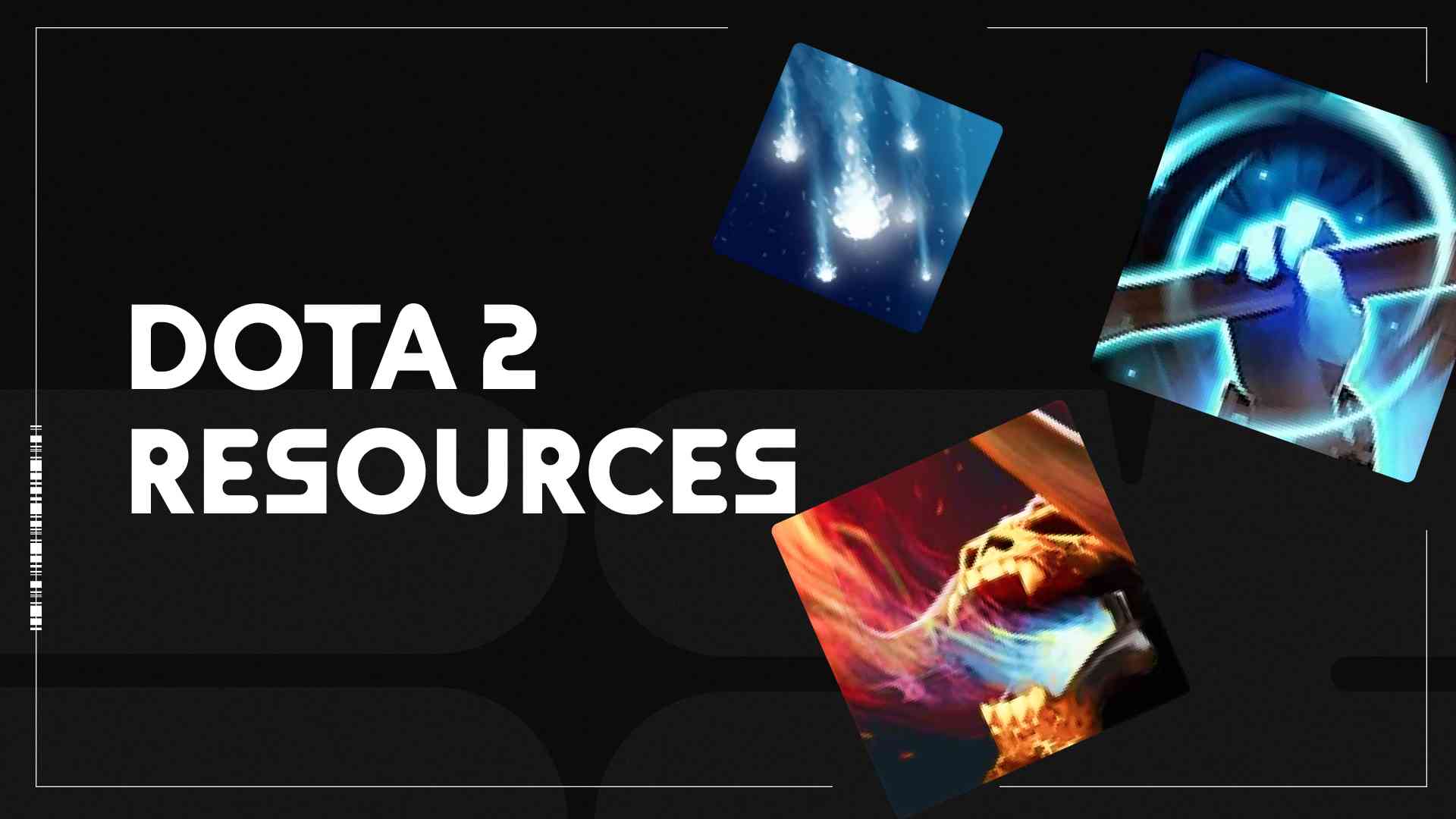
Resources Usage
Utilizing your abilities effectively significantly impacts all stages of the game, especially during the Laning Phase. Aim to use your abilities in a way that allows you to kill an enemy creep with one spell while also damaging an enemy hero. It’s essential to balance using your skills and conserving mana.
What is HP and MP Tracking?
Always track your and your opponents’ health and mana. Continuously check enemy heroes for their resources. This simple action will help you choose an effective moment to attack, which is especially important in the game’s early stages. Also, remember to bring consumables such as Tango, Healing Salve, and Clarity if necessary.
How to Use Abilities and Items Cooldowns in Dota 2?
Recharging abilities and items at all stages is crucial. Always remember the moments when enemy heroes recharge important items and abilities, such as strong ultimates with long cooldowns or essential items like Black King Bar or Refresher Orb.
How to Act in Dota 2 Teamfights?
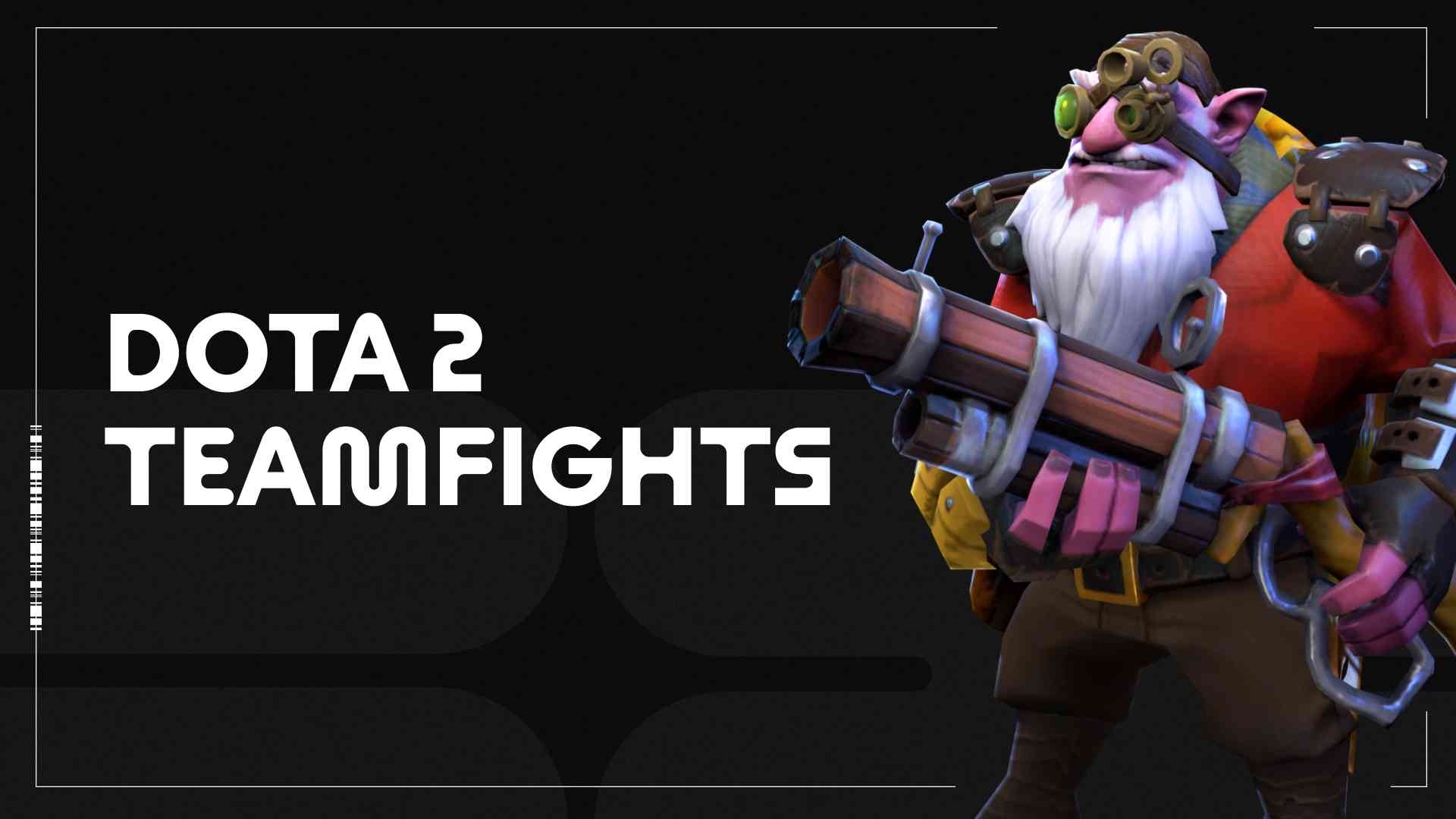
Team Fights Tactics in Dota 2
What Target to Focus in a Team Fight?
Choosing priority targets is vital for successful fights in Dota 2, as determining the right target to focus on can significantly impact the outcome of a fight. In total, important targets can be categorized into three types:
- The first type consists of heroes who can save allies in any situation. Examples include Oracle, Io, Dazzle, Omniknight, and others. It’s crucial to focus on these targets at the first opportunity. There’s no point in attacking an enemy core hero if they have Oracle behind them.
- The second type consists of heroes, often enemy Support, who can be instantly killed. Instead of breaking through a tough Timbersaw, Pudge, or Tidehunter, it’s better to quickly attack and eliminate one of the Supports. This action will immediately give you a numerical advantage at the beginning of the fight.
- The third type consists of the enemy team’s high-damage targets or key heroes. There are often situations when you have to focus on one of the enemy heroes; otherwise, they will have the opportunity to deal massive damage in a fight. Usually, these are situations when you are playing a non-mobile hero who cannot move quickly in a fight.
Where to Stand in Fights?
Positioning is crucial in determining the outcome of a fight. The choice of position typically depends on your character and role in the game.
If you are playing as a Support, especially one that can save allies, you should stay behind your teammates and maintain a safe distance from enemy heroes. Always keep an eye on where the fight is taking place. Use fog of war, high ground, and trees to choose the best position.
On the other hand, if you are playing a Core hero, particularly one that can initiate a fight, such as Axe or Tidehunter, you should be more aggressive. Stay ahead of your teammates and look for the perfect moment to engage in combat.
When playing as a Mid or Carry, there is no clear-cut answer to where you should be in a fight. It often depends on the situation in the game. As a rule, you need to estimate the strength of your hero. If possible, wait for a good moment when your opponent makes a mistake with their positioning or when you get a chance to reach the target quickly.
When or Why to Start a Fight?
When starting a fight, there are key moments to consider, such as when it allows your team to secure an important objective on the map, such as an enemy Tower, Roshan, or Tormentor. Engaging in a fight can also allow you to place useful Wards on the enemy’s part of the map.
When deciding when to initiate a fight, consider the cooldowns of key abilities of both allied and enemy heroes. If you are confident that the enemy does not have one or more important ultimates available for use, it’s a good time to start a fight.
Always try to capitalize on your success. If you have a successful fight, consolidate your advantage by destroying the enemy Tower, setting up an aggressive vision, or securing Roshan.
How Do You Act in a Team?
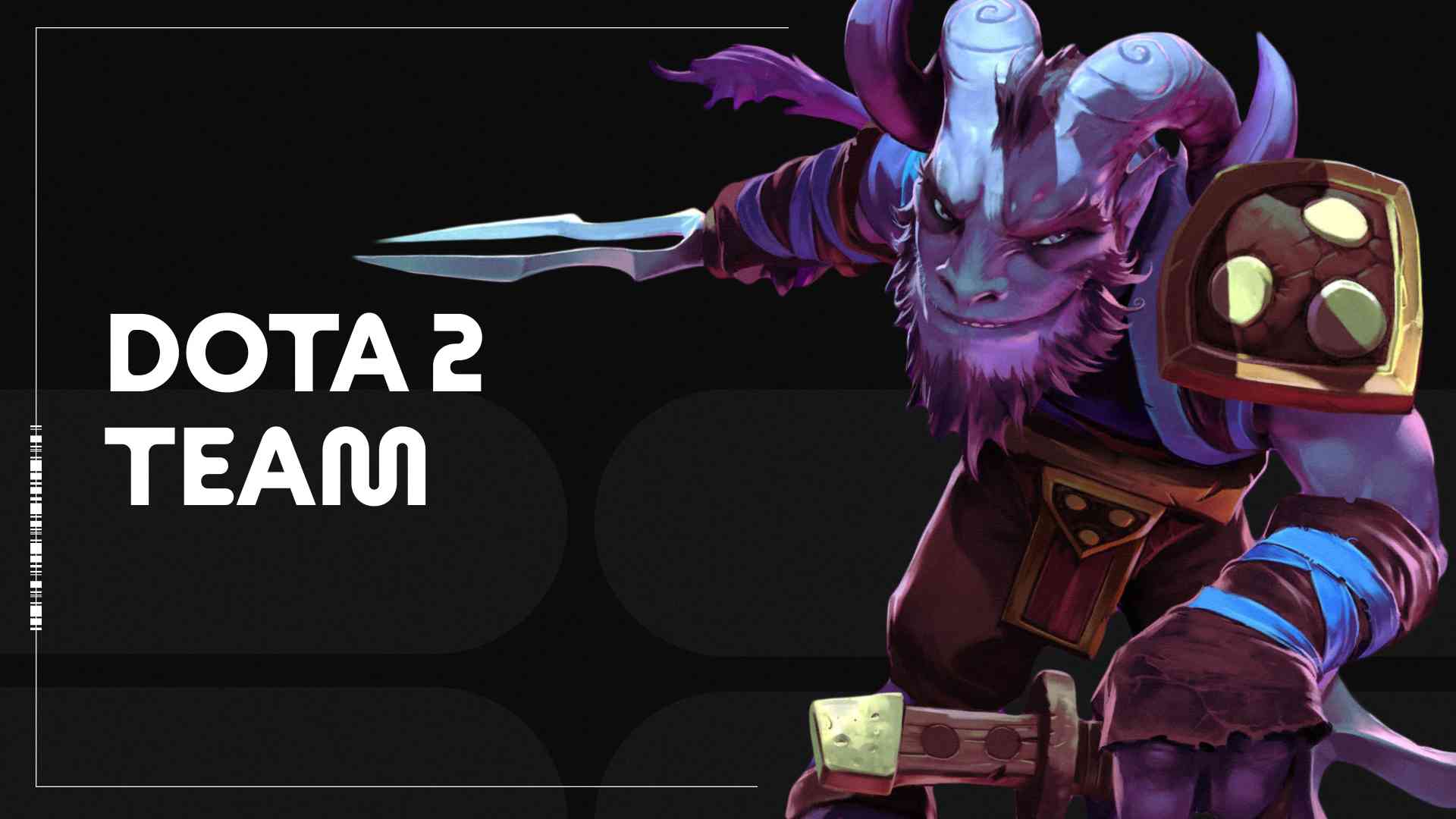
Playing as a Team in Dota 2
Effective communication is crucial when working in a team. Keep in touch with your teammates and listen to them. Monitor the resources and abilities of your allied heroes. If you are confident in your skills, assist less experienced players. Work with your team to identify key objectives, such as killing Roshan or moving around the map. Support your allies and avoid insulting them when they make mistakes, as this will not improve their performance.
Why is Communication Important in Dota 2?
Good communication is critical to success in the game. Always try to stay in contact with your allies. Use voice chat to communicate your intentions to your teammates and to ask for their help when needed. Avoid talking non-stop and focus on the current game situation.
What Should I Call a Significant Role?
Each role can take the initiative at some point during the match. When should you be more active and demonstrate your leadership skills? Let’s examine the example of each role:
Carry role (Position 1): When playing the Carry role, it’s essential to communicate with your Support during the Laning Phase. Let them know when you are ready to make aggressive moves or want to play more passively. Don’t hesitate to ask your Support for resource recovery items. In the mid-game, focus on farming, but keep your teammates informed when you are prepared to join team fights. In the late game, the responsibility falls on you. Look for suitable moments to engage, coordinate with your allies for fights, and request your Supports to stay close to you.
Mid role (Position 2): When playing on the Middle Lane, always be prepared to ask your allies to teleport instantly if you need help. Don’t blame your teammates for keeping quiet and not reacting in time.
Always communicate with your teammates about where you will gank when actively moving around the map.
If necessary, ask your teammates to bait the enemy. This will allow you to secure favorable kills for your team.
Offlaner (Position 3): Always communicate with your fourth-position Support. If needed, instruct them on which target to focus on. If you find yourself in a relatively easy lane, you can request your Support to gank another lane or assist in controlling a Rune. Ask your ally to stick with you in a Hard Lane and avoid wandering too far. When your hero reaches a power peak, such as after purchasing a Blink Dagger, take the lead and request your allies to accompany you for effective ganks.
Supports (Position 4/5): It’s important to maintain constant communication with your lane partner when playing as a Support. Let them know your intentions, such as whether you plan to attack creeps or reposition for a fight. In the early game, take the lead and be proactive.
How to Step Up and Become Better?
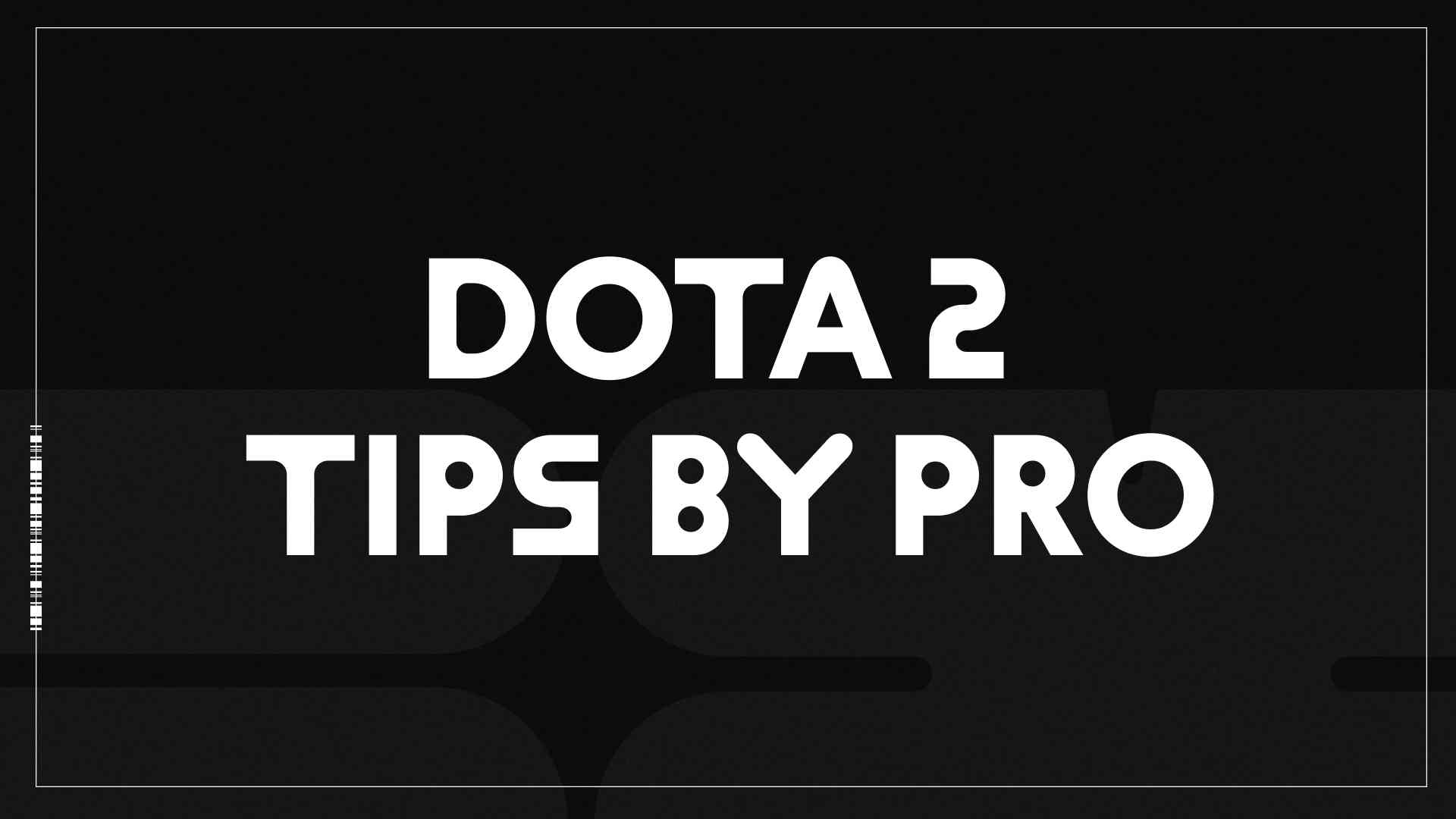
Dota 2 Tips by Pro
- Choose your favorite role and concentrate on it. It’s challenging to excel in all roles simultaneously. Select a role that suits your gameplay and focus on it.
- Once you’ve chosen a role, selecting a few of the most effective heroes is important. Reducing your Hero pool allows you to play your chosen Heroes more efficiently. After mastering them, consider adding new ones.
- Keep your characters pool up to date and study patches for essential changes.
- Watch professional replays to learn from skilled players in your role. Study their games, streams, and replays, and note key moments.
- Don’t feel bad about losing. There are times in Dota when it’s impossible to win. Just accept it. After a losing streak, there is always a winning streak.
- Focus on your own game, not your allies. Don’t blame teammates for bad plays. Improve your performance to raise your ranking.


